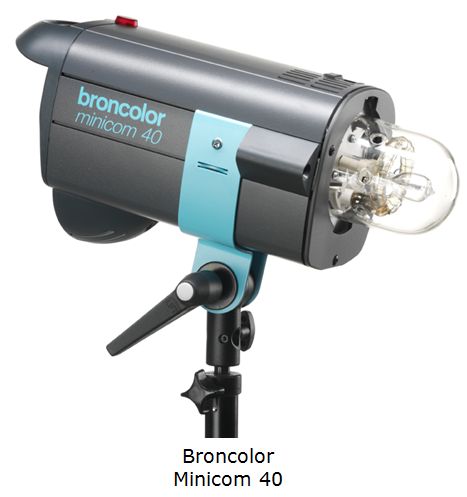Studio Flash
The flash is commonly called flash larger study that connect to the camera using a cable or a PC infrared or radio.
These flash has several advantages: they have more power than other flash that will allow them to take pictures even when no light, there are a lot of accessories that are available to make the hard light or diffuse and usually come with modeling light.
The modeling light is usually a tungsten light that is in the flash head that can be kept on when we are about to take the picture.
This light lets you see the scene in situations of low light or no light. It also lets you see how the flash will illuminate the scene, where the shadows will fall, and so on.
A disadvantage of these flashes is price: they're much more expensive than flash mentioned above (although this will depend on your make and model of flash) and accessories can also be quite expensive.
Another disadvantage is the size and weight. The studio flash are larger and heavier than before, and the more power is bigger and heavier.
This can be a disadvantage if we use the flashes outside and have to carry much equipment.
There are 2 types of studio flash
Mono flash
These flash plug directly into the outlet and there is where he gets the energy to fire the flash. It's all in the head: the capacitor, the flash and modeling light controls.
The advantage of this flash is that they are independent of each other and can be used at greater distances than the flashes with generator (next category).
A disadvantage is that they are larger and heavier than those using a generator.
Another disadvantage is that when we use 2 or more flash, not being connected to each other, the flash that are not connected to the camera will have `` to do'' flash light attached to the camera to shoot.
What does this mean? The single flash have a light sensitive photocell. When using more than 1 flash will be one that connects to the camera.
When we shoot the camera to take a photo that is connected flash will trigger the light.
The other flash will fire when the photocell receives light that first flash.
If the light of the flash does not reach the photocells of the other flash then they will not trigger the light.

Properties of mono flash
1. Flash tube: make the flash light
2. Modeling light: light is usually tungsten or quartz that will allow us to visualize the effect of flash light.
3. Glass Protector: protects the flash tube and modeling lamp.
4. Photocell: Makes the flash fire when another flash is fired. Can be turned on or off.
5. Plug: where you connect the cable to the electrical outlet.
6. Button on or off.
7. Button that indicates when the flash is charging shot and button (recycling).
8. Power Control: To change the flash intensity. Usually ranges from full power (1/1) to 1/32.
9. Light control modeling: one can regulate the intensity of light.
10. Plug sync cable, radio or infrared system.
11. To fire the flash button (test button).
To use these we will need flash lights tripods are strong enough and heavy to keep from falling.
There are numerous models and brands, but I recommend buying one that is stable.
If we are to take pictures under study can have heavy feet, but mostly take pictures outdoors should have a stable but lighter.

